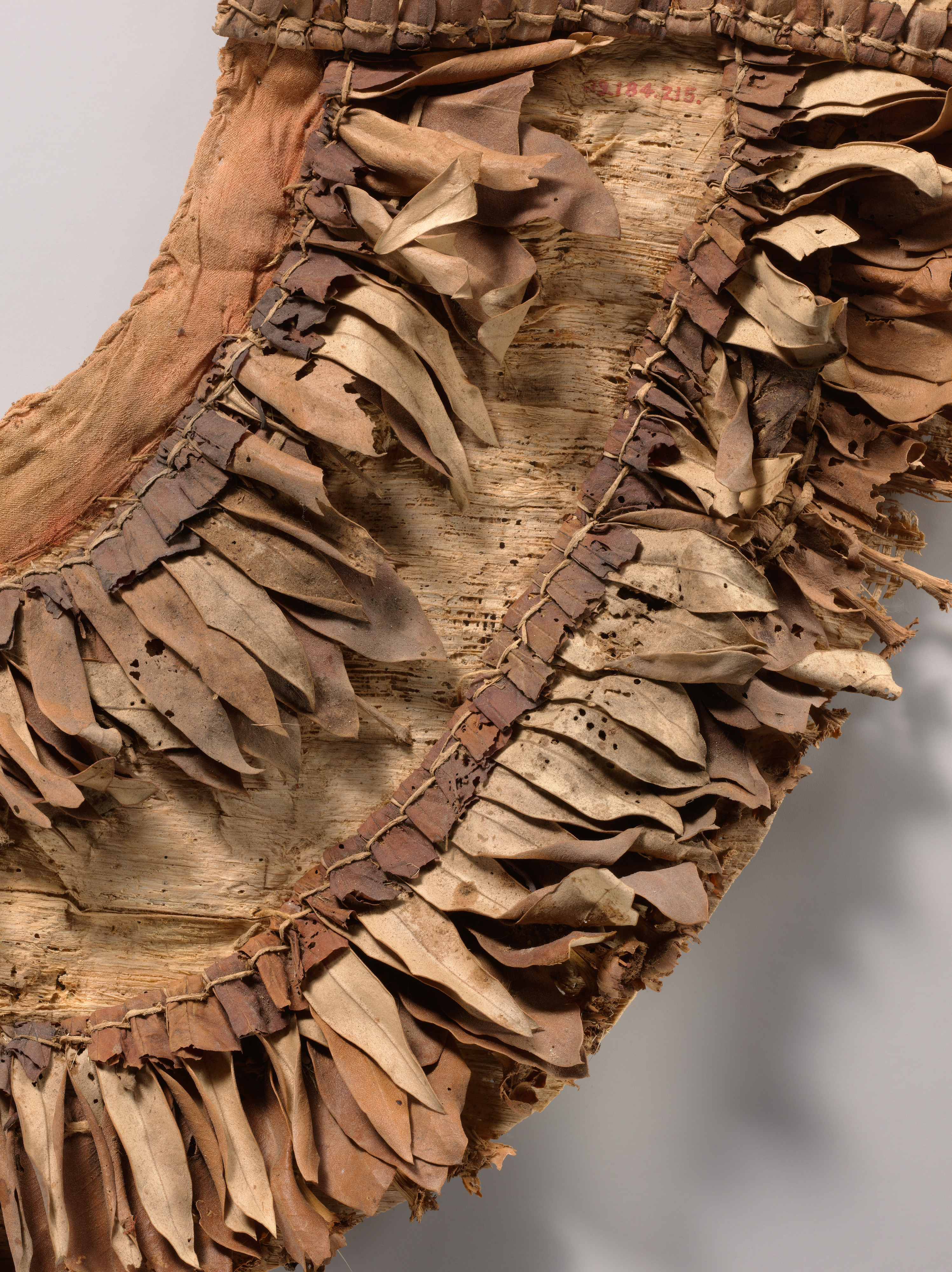Floral collar from Tutankhamun's Embalming Cache
New Kingdom
This remarkably preserved floral collar, from the funerary cache of Tutankhamun, illustrates how the broad collars so frequently depicted in Egyptian tomb paintings were made. Alternating rows of flower petals and blossoms, leaves, berries, and blue faience beads were sewn to a papyrus backing, and linen ties secured the collar around the wearer's neck. Some of the flora used in the Tutankhamun collars have been identified as olive leaves, cornflowers, and poppies. Several collars in the cache, like this one, were bound around the edge with red cloth, and the resulting combination of red, blue, black, and green must have been very colorful and similar to the polychrome decoration on some of the terracotta vessels in same deposit (09.184.99).
After the king's funeral, the floral collars, broken dishes, and other materials used during the ceremonies were placed in the large pottery storage jars that were found in the cache thirty-three hundred years later.
Due to rights restrictions, this image cannot be enlarged, viewed at full screen, or downloaded.
This artwork is meant to be viewed from right to left. Scroll left to view more.





